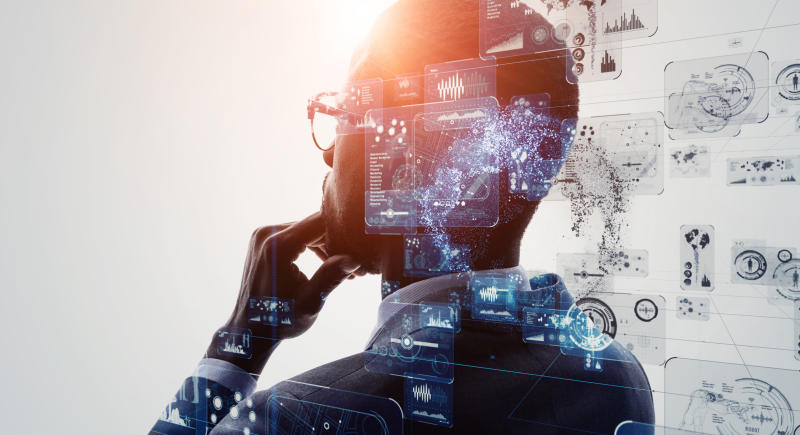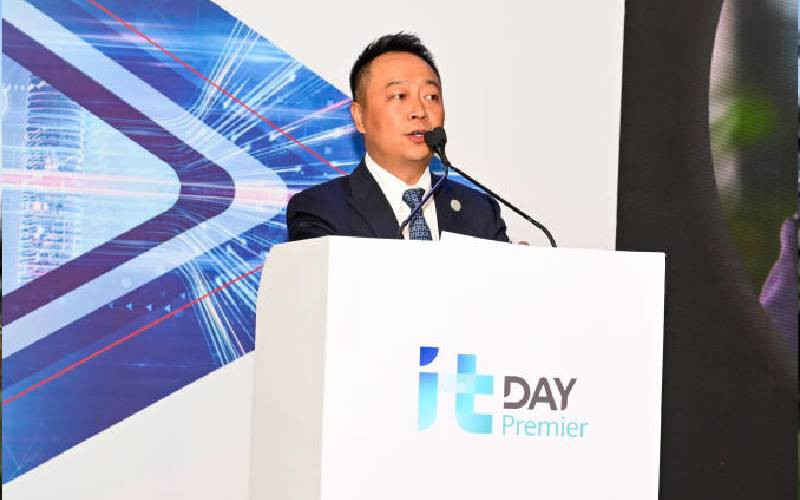
AI (Artificial Intelligence) concept. [Courtesy]
Artificial Intelligence (AI) is here with us, and with it come several benefits. As a country, we must tap into its benefits for the sake of national development.
AI is the simulation of human processes by machines, especially computers, through the use of captured data.
The objective of AI is to make computer systems simulate human thinking in solving complex problems.
AI can create a vastly more productive and efficient economy and, if properly harnessed, generate enormous prosperity for people, and opportunities.
It can help discover new knowledge and pointers to solutions not thought about before.
Globally, AI is transforming economies by enhancing transparency, efficiency, inclusivity, as well as the ability to make better decisions and deliver better services to citizens.
In healthcare, AI improves clinical workflows while simultaneously contributing relief and prevention of burnout. It can also help pinpoint the number of hospital-acquired infections to patients.
- Jacaranda Health banks on AI-driven initiatives to support maternal healthcare
- How AI is driving war on mother-to-child transmission of HIV
- How AI is solving major healthcare challenges in Africa
Keep Reading
Data input and output is an example of where AI can improve physician satisfaction and efficiency.
According to the results of a September 2018 survey by Stanford University’s School of Medicine and the Harris Poll, 62 per cent of a physician’s time with a patient is spent on the patient’s electronic health record.
AI has the potential to take over the time-consuming task of data input so that clinicians can focus on providing the highest quality of care to patients.
According to the Journal of Clinical Research and Bioethics report of 2015, misdiagnosing illnesses and medical errors accounted for 10 per cent of all deaths in the United States.
An AI model, using algorithms and deep learning, diagnosed breast cancer at a higher rate of accuracy than 11 pathologists. That is an indication, the promise of improving the diagnostic process is one of AI's most promising healthcare applications.
Another key area is security, where facial recognition tools enhance surveillance.
In China, for example, surveillance is automated and works 24/7, providing real-time insights, instead of manual monitoring of closed-circuit television (CCTV) cameras which require constant human intervention hence prone to errors, especially due to fatigue.
In Kenya, AI is seeping into our lives in remarkable ways with a good example being in healthcare where blood services are run under programs such as Damu Sasa.
This is an end-to-end blood services management technology that generates value and creates efficiencies at every stage of the blood services value chain.
It uses AI to monitor a patient’s blood transfusion history. Based on the requested and transfused blood products, the system can suggest to physicians and laboratory technologists alternative blood products, based on inferences about the efficacy of the frequently requested blood products.
The system also bases the alternatives on the successful transfusion of other patients who have been transfused with the alternative blood products.
In light of that, AI simplifies physicians’ work by performing tasks that are typically done by humans, but in less time and at a lower cost.
In banking, the use of AI especially in making credit lending decisions is in place. For example, mobile lenders use data from different sources to determine how much to lend to a credit applicant.
Safaricom’s lending Fuliza limits are set based on a borrower’s profile data such as M-PESA transactions, phone calls, and other data on the person.
As much as some of these areas are using AI, there are more areas that technology can be applied to.
In the security sector, the automation of the Occurrence Book (OB) would improve policing. For example, if a criminal is booked in a specific police station in one part of the country and yet they had previous encounters with the police in other parts of the country, it is difficult to corroborate those events and hence the decisions that may result from such facts.
With an automated OB and with this data fed to an AI engine, the outcomes may be different from that of a manual system.
To fully exploit the potential of AI, our country needs to invest in the basics that would enable AI to take off. For example, we must equip our institutions to develop and nurture AI-skilled personnel.
Market research of March 2021 commissioned by the International Business Machines Corporation (IBM) found that almost one-third of Information Technology professionals surveyed globally say their business is now using artificial intelligence (AI) with 43 per cent reporting that their companies had accelerated their rollout of Artificial intelligence as a result of the COVID-19 pandemic.
In Kenya, there is a need to invest in research and development in AI to enhance its application to solve problems the country faces. Research and development will help explore areas where AI can be applied and to enable the development of AI applications.
Technology, once in place, takes a life of its own because others now have a chance to innovate around the building blocks of that technology.
M-PESA provides a good example of such evolution where it manifests itself in different applications, including money transfer, payments, borrowing such as Fuliza, savings and borrowing such as M-shwari.
The writer is an Alumni of the Presidential Digital Talent Programme
 The Standard Group Plc is a multi-media organization with investments in media platforms spanning newspaper print
operations, television, radio broadcasting, digital and online services. The Standard Group is recognized as a
leading multi-media house in Kenya with a key influence in matters of national and international interest.
The Standard Group Plc is a multi-media organization with investments in media platforms spanning newspaper print
operations, television, radio broadcasting, digital and online services. The Standard Group is recognized as a
leading multi-media house in Kenya with a key influence in matters of national and international interest.











